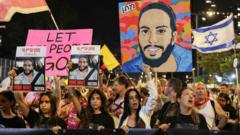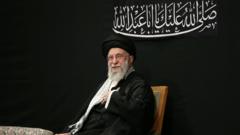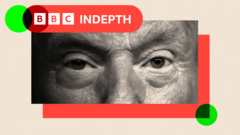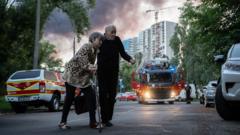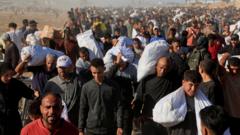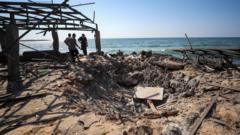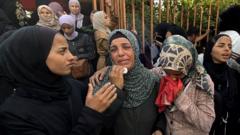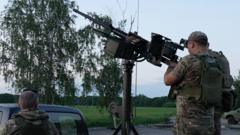Ayatollah Ali Khamenei, Iran's supreme leader, has made his first public appearance amid the ongoing tensions with Israel. His absence had generated speculation about his health and security concerns.
Khamenei Makes First Public Appearance Amid Ongoing Conflict

Khamenei Makes First Public Appearance Amid Ongoing Conflict
Ayatollah Khamenei's return to the public eye raises questions during a critical period for Iran.
In a surprising turn of events, Iranian state media reported that Ayatollah Ali Khamenei, the supreme leader of Iran, was seen publicly for the first time since the escalation of hostilities with Israel over the past month. This appearance occurred during a significant Shiite religious ceremony known as Ashura at his residence. Khamenei, who has been out of the public eye for an unusual duration, sparked widespread discussion regarding his health and potential threats against his life.
Previously, Khamenei had delivered video messages following U.S. airstrikes on Iranian nuclear facilities and the announcement of a cease-fire with Israel, where he appeared noticeably strained and struggled with his speech. His lengthy absence, which diverged from his three-decade pattern of public engagement, raised alarms from analysts and observers who speculated on the implications of his health status on Iran’s political landscape.
On Saturday evening, attendees at the Ashura ceremony expressed surprise and enthusiasm upon Khamenei's arrival. Dressed in his customary black robe and checkered headdress, he was met with a rousing response from the crowd, who stood and chanted in unison. Videos broadcast on state television depicted Khamenei seated apart from other officials, including Iran’s vice president and parliamentary leader, suggesting a notably careful approach to his public engagements.
Despite his physical appearance, which contrasted sharply with the vigor typically associated with his role, Khamenei refrained from addressing the audience directly during this event. Instead, his brief video communications offered only a glimpse into his state of mind post-conflict and nuclear site attacks, effectively prompting further speculation about the internal dynamics of Iranian leadership at such a tumultuous time.
Previously, Khamenei had delivered video messages following U.S. airstrikes on Iranian nuclear facilities and the announcement of a cease-fire with Israel, where he appeared noticeably strained and struggled with his speech. His lengthy absence, which diverged from his three-decade pattern of public engagement, raised alarms from analysts and observers who speculated on the implications of his health status on Iran’s political landscape.
On Saturday evening, attendees at the Ashura ceremony expressed surprise and enthusiasm upon Khamenei's arrival. Dressed in his customary black robe and checkered headdress, he was met with a rousing response from the crowd, who stood and chanted in unison. Videos broadcast on state television depicted Khamenei seated apart from other officials, including Iran’s vice president and parliamentary leader, suggesting a notably careful approach to his public engagements.
Despite his physical appearance, which contrasted sharply with the vigor typically associated with his role, Khamenei refrained from addressing the audience directly during this event. Instead, his brief video communications offered only a glimpse into his state of mind post-conflict and nuclear site attacks, effectively prompting further speculation about the internal dynamics of Iranian leadership at such a tumultuous time.

